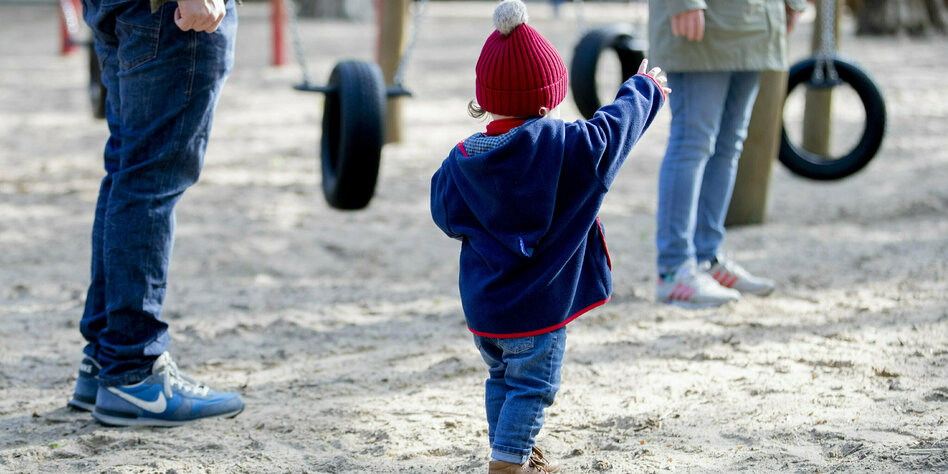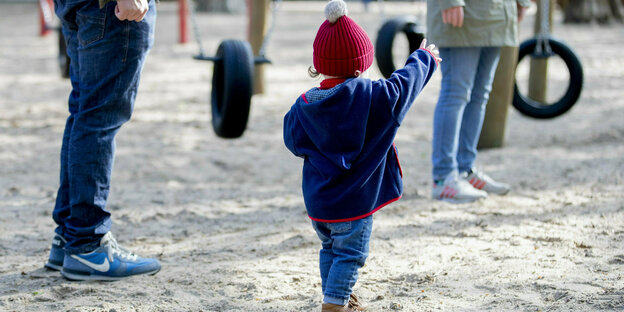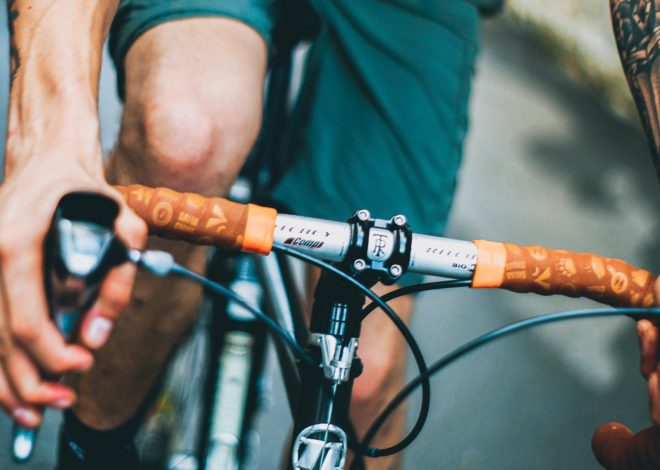
Children’s mental health: Without a stop
Studies show that one fifth of all children and young people suffer from mental disorders. The support system is not prepared for this.

The path after the pandemic remains difficult for children and young people Photo: Christoph Soeder/dpa
BERLIN taz | It smells of fresh paint, in some places cables are hanging from the ceiling and the rooms are not fully furnished. Only in the music room is a drum kit set up and in the sports room there is already a table tennis table. There are still two weeks to go before the first children and young people can be accommodated here. Nevertheless, the Elisabeth Clinic for the mental health of young people in Berlin-Zehlendorf was officially opened this Thursday.
The district councillor for youth and health, Carolina Böhm, speaks of a “milestone in the care structure in western Berlin”. “The situation for children in Berlin is precarious,” says the SPD politician, who herself suffered from anorexia in her youth, with a view to the increasing number of mental illnesses and the long waiting times. That is why she is visibly proud that a clinic for children and young people aged 3 to 18 with 48 treatment places has been built here in a construction time of just over a year and a half, which is a record for Berlin.
The need is great: According to studies, one fifth of all children and young people suffer from mental disorders. Since Corona, the numbers have risen again. At the same time, the support system is overloaded and not all those affected get a place in therapy.
Ottmar Hummel has been treating young people with mental health problems for a long time. The chief physician of the clinic for child and adolescent psychiatry at the DRK Kliniken Berlin Westend in Charlottenburg is concerned about the massive increase in people seeking help. “Corona was a turning point,” he says.
Hummel sits in his office, his legs crossed, his expression friendly and curious at the same time. Behind the walls of the clinic, the street noise of the busy main road Spandauer Damm can no longer be heard. The birds are chirping and the lush green meadows between the venerable brick buildings give an idyllic impression.
After Corona comes panic
“At the beginning of the pandemic, there wasn’t much going on here. It wasn’t until Corona was almost over, in the winter of 22/23, that things really started to take off,” says Hummel. Suicidal thoughts, depression, anxiety and panic attacks among young people became more frequent. “Many students who had been left behind came. Normality was back in the schools, but that was not possible for many of them.”

This text comes from the weeklytaz. Our weekly newspaper from the left! Every week, the wochentaz is about the world as it is – and how it could be. A left-wing weekly newspaper with a voice, attitude and the special taz view of the world. New every Saturday at the kiosk and of course by subscription.
Many young people were already socially isolated at this point. Since social contacts and leisure activities outside of school were restricted during the pandemic, they withdrew, sometimes not leaving their rooms for months or even years. They cannot get out of there on their own.
This was no surprise to Hummel and his team; they were prepared for it. What caught them off guard was the fact that the landscape of helpers had also changed. “Pre- and post-hospital care, counseling centers, psychotherapists, everything has been shut down,” says Hummel. Not because there is no money, there is simply a lack of people. Whether in nursing, the youth welfare office or daycare: there is understaffing everywhere. “Corona has done a lot to people, they are questioning the meaning of life and need more time for themselves,” believes Hummel. The times when people burn out on the cause seem to be over.
Too little space in clinics
The problem: the less help and interception is provided in advance, the more end up in the clinic. There are 76 places in the child and adolescent psychiatry department in Charlottenburg, 5 of which are for so-called inpatient treatment, where patients are treated at home. The waiting time here is up to nine months. But acute cases are of course not turned away. “So emergency symptoms are mentioned so that they can be helped more quickly. The new buzzword is panic disorder,” says Hummel with a grin. He certainly understands this. “The parents are desperate.”
In total, there are eight clinics for child and adolescent psychiatry in Berlin. The Senate Health Administration also knows that this is not enough for a metropolis of millions like Berlin: It states that there is an “increased need for psychiatric capacity in the field of child and adolescent psychiatry and psychotherapy,” a spokesperson told taz. By 2025, 134 additional places are to be created and the total number increased to 601.
The range of services for children and young people has also been expanded in the rest of the country: As the Federal Ministry of Health announced in response to a taz inquiry, the level of care has been increased by 10 percent since 2022, creating 60 new practice opportunities for child and adolescent psychiatrists and psychotherapists. A new directive is also due to come into force shortly to improve coordination between the various assistance systems.
It is questionable whether that is enough. According to the Federal Chamber of Psychotherapists, the average waiting time for a therapy place is five months. “It is difficult to get a place to receive help, especially in the youth sector,” says Torsten Hill. Hill runs a self-help group at the Berlin regional association “Relatives of Mentally Ill People” (APK) and is himself the father of a daughter with mental health problems.
“You only notice very late that children have serious problems,” he says. Many parents do not see the signs, schools are overcrowded and children are often sedated with medication instead of being helped. “It is easier to get medication than a medical assessment.”
Parents at their limit
Hill criticizes the fact that there is no central contact point to help relatives of mentally ill children and young people. “Parents try to save their children and run themselves ragged.” Self-help groups are a great help in this regard, allowing people to exchange ideas and realize that they are not alone with their fears and worries.
The fact that mental health problems among children have increased since the pandemic is also reflected in the fact that the number of self-help groups at APK has almost doubled, according to Hill. “The schools were already at their limit, and now the parents are at their limit too.” And the children as well. Many young people react to the increased pressure and the associated fears by either withdrawing or turning to drugs to keep going.
Child and adolescent psychiatrist Ottmar Hummel also experiences this. Beyond that, however, it is mainly hyperactive, aggressive boys of primary school age who come to the clinic. This changes during puberty and it is mainly girls who struggle with eating disorders and depression. Social inequality is also evident in the clinic: poor and migrant people suffer from mental illnesses more than twice as often as the rest of the population. “The less educated you are, the more difficult it is,” says Hummel.
Studies also show that the risk of mental illness is higher in cities than in rural areas. In a big city like Berlin, there is also the drug problem. Berlin is the number one German city in terms of cocaine and MDMA residues analyzed in wastewater. Young people in the capital are not only consuming more and more drugs, they are also starting to do so at an increasingly early age. “It really starts in the 7th grade,” says Hummel.
Mixed consumption is not uncommon: “Speed to get up, grass to go to sleep, and everything in between.” However, he stresses that there has been no increase since the partial legalization of cannabis. Instead, something else has increased: prescription drugs such as benzos and opiates. A problem that is more pronounced in Germany. “It’s a city-country story, but there are also big differences between East and West.” In other words, people tend to drink more alcohol in the country, and consume more drugs in cities.
Aggressive toddlers
And something else has changed: while last year it was mostly teenagers who came to the hospital, now it is the youngest children who end up in the hospital: “Parents come with children in their second and third year,” reports Hummel. How can that be? Because daycare is also being closed more and more often, many small children are no longer able to be in groups, are causing trouble and are aggressive, says the head doctor. In connection with the lack of staff in daycare, this is becoming an increasing problem. But support structures such as social pediatric centers can no longer cope with this due to the lack of staff. “There are now so many cases that they are overwhelming the system,” says Hummel.
In Westend, they are not prepared for such young patients. Not yet. “The future will be parent-child treatment,” says Hummel. They want to create a new department for this. Because in order to help the children, the parents would have to change.
But what needs to change so that the youngest members of society are not destroyed by it? “School is not a good place, but a place of failure,” says Ottmar Hummel. “If school was a place where children like to go, many things would be better.” His colleague at the new Elisabeth Clinic, chief physician Jakob Florack, sees it the same way: “If there were fewer problems in education, there would also be fewer mental illnesses.” Torsten Hill from the relatives’ self-help group, whose daughter was treated for bullying, has another suggestion: social skills as a compulsory subject.

Ethel Purdy – Medical Blogger & Pharmacist
Bridging the world of wellness and science, Ethel Purdy is a professional voice in healthcare with a passion for sharing knowledge. At 36, she stands at the confluence of medical expertise and the written word, holding a pharmacy degree acquired under the rigorous education systems of Germany and Estonia.
Her pursuit of medicine was fueled by a desire to understand the intricacies of human health and to contribute to the community’s understanding of it. Transitioning seamlessly into the realm of blogging, Ethel has found a platform to demystify complex medical concepts for the everyday reader.
Ethel’s commitment to the world of medicine extends beyond her professional life into a personal commitment to health and wellness. Her hobbies reflect this dedication, often involving research on the latest medical advances, participating in wellness communities, and exploring the vast and varied dimensions of health.
Join Ethel as she distills her pharmaceutical knowledge into accessible wisdom, fostering an environment where science meets lifestyle and everyone is invited to learn. Whether you’re looking for insights into the latest health trends or trustworthy medical advice, Ethel’s blog is your gateway to the nexus of healthcare and daily living.



